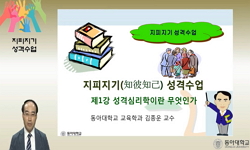From the era of the Silla Dynasty through that of the Joseon Dynasty, the cultural elite of Korean society had been deeply involved in the composition, transmission, and preservation of the songs composed and sung in Korean, adjusting their attitudes ...
http://chineseinput.net/에서 pinyin(병음)방식으로 중국어를 변환할 수 있습니다.
변환된 중국어를 복사하여 사용하시면 됩니다.
- 中文 을 입력하시려면 zhongwen을 입력하시고 space를누르시면됩니다.
- 北京 을 입력하시려면 beijing을 입력하시고 space를 누르시면 됩니다.

우리말 노래 창작의 사상적 기반: 주체와 타자에 대한 담론을 중심으로 = An Ideological Basis of Composing Songs in Korean:The Epistemological Relationship between the Self and the Other
한글로보기https://www.riss.kr/link?id=A107397087
- 저자
- 발행기관
- 학술지명
- 권호사항
-
발행연도
2007
-
작성언어
-
-
주제어
the Self ; the Other ; Korean vernacular ; the Chinese language ; ideological stance ; Gyunyeo ; Iryeon ; Hyanga ; Yong-bi-eo-cheon-ga ; Do-san-sib-i-gok ; Tweghyeh ; Go-san-gu-gok-ga ; Yulgok ; Sijo ; Damheon ; Junzi ; ideological basis ; cultural elite ; Korean songs ; 均如 ; 一然 ; 鄕歌 ; 龍飛御天歌 ; 陶山十二曲 ; 退溪 ; 高山九曲歌 ; 栗谷 ; 時調 ; 湛軒 ; 君子
-
KDC
810
-
등재정보
KCI등재
-
자료형태
학술저널
-
수록면
1-24(24쪽)
- 제공처
- 소장기관
-
0
상세조회 -
0
다운로드
부가정보
다국어 초록 (Multilingual Abstract)
From the era of the Silla Dynasty through that of the Joseon Dynasty, the cultural elite of Korean society had been deeply involved in the composition, transmission, and preservation of the songs composed and sung in Korean, adjusting their attitudes whenever their ideological stance on the Korean language and the idea of the self changed. A rough chronological outline of significant historical moments in this regard is as follows: 1. Gyunyeo ( 均如) and Iryeon (一然), renowned Buddhist monks from the Goryeo Dynasty, recognized and emphasized that universal truth could be learned and reached through Korean vernacular, as well as through the Chinese language. Owing to this endorsement, the cultural elite of the nation participated actively in the production and consumption of Hyanga (鄕歌), popular songs orally transmitted in Korean, especially during the periods of national crisis, such as the invasions of the Kitans (契丹族) and the Mongols (蒙古族). 2. King Sejong (世宗) of the Joseon Dynasty was working on this very legacy when he invented the Korean alphabet Hangul and used it to compose Yong-bi-eo-cheon-ga (龍飛御天歌) to glorify his royal ancestors. In doing so, he provided his people, who could speak only Korean, with an opportunity to read and learn about the ancestors of the new dynasty, who, he believed, were now immortalized in heaven. 3. The idea that Gyunyeo and Iryeon shared with Sejong had gradually weakened since the first half of the sixteenth century, when two Confucian scholars, Tweghyeh ( 退溪) and Yulgok (栗谷), developed alternative discourses on the Korean language. While Tweghyeh denied the value of Korean as a language for philosophical truth, Yulgok seems to have been more optimistic about the capacity of his mother tongue. Nevertheless, they both composed songs in Korean ―respectively, Do-san-sib-i-gok (陶山十二曲) and Go-san-gu-gok-ga (高山九曲歌)―to describe the self-sufficient lifestyle of the Junzi (君子), or man of virtue, seeking truth in the world. Their emphasis on a premeditated set of rhythm in composition, however, provided an ideological basis for the syllabic verse known as Sijo (時調), which became popular among the cultural elite in subsequent generations. 4. Between the end of the seventeenth century and the beginning of the eighteenth century, another group of Confucian scholars noted that the popular songs sung by the common people might be in some sense more appropriate to express natural emotions of the Koreans than the highly artificial syllabic verse form of Sijo. Damheon ( 湛軒), for instance, maintained that the Koreans should distinguish themselves from the Chinese as they were the subject of their own thoughts and emotions. It was under the influence of him and his colleagues that the once-disregarded genre of Hyanga was rediscovered and revitalized to appear frequently in contemporary song collections. The history of the Korean songs had thus been affected by the ways in which the cultural elites of Korean society defined the relationship between the Korean and the Chinese language, and, consequently, by the ideas of the self or subject that they had cultivated. When they were able to widen their idea of the self to embrace the common people, the cultural elite of the Goryeo and Joseon Dynasties did not hesitate to recognize Korean as a poetic and philosophical language, whereas, when they needed to differentiate themselves from the common people, they disregarded the very linguistic medium that their social inferiors used to communicate and compose songs, as well.
목차 (Table of Contents)
- 1. 서론 2. 균여와 일연의 향가 옹호론에 내포된 주체 담론 3. 퇴계와 율곡의 시조 창작에 함축된 주체 담론 4. 조선 후기 우리말 노래 수집에 작용한 주체 담론 5. 결론
- 1. 서론 2. 균여와 일연의 향가 옹호론에 내포된 주체 담론 3. 퇴계와 율곡의 시조 창작에 함축된 주체 담론 4. 조선 후기 우리말 노래 수집에 작용한 주체 담론 5. 결론
동일학술지(권/호) 다른 논문
-
문학 감상에서의 주체와 타자: <혼쥐> 설화의 문학치료학적 감상과 교육적 가치
- 국문학회
- 이인경(Inkyung Lee)
- 2007
- KCI등재
-
- 국문학회
- 백승호(BAEK, SEUNGHO)
- 2007
- KCI등재
-
- 국문학회
- 김보경(Kim Bo Kyeong)
- 2007
- KCI등재
-
- 국문학회
- 이유진(Yi, Yujin)
- 2007
- KCI등재




 KCI
KCI 스콜라
스콜라







